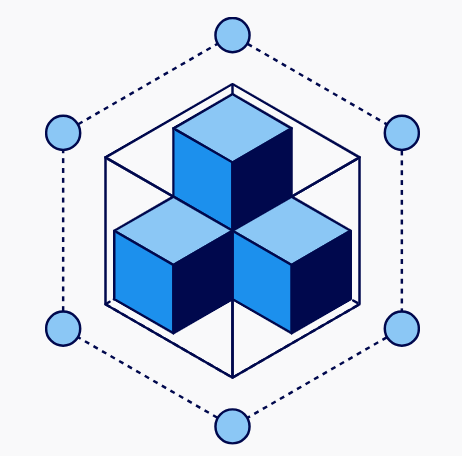From Docker To Kubernetes

Containers have undoubtedly become a technological buzzword in recent years. The emergence and rise of containerization technology, along with the microservice architecture, DevOps, and cloud-native concepts it has spawned, have had a profound impact on the software industry.
Containers offer numerous advantages. Their comprehensive encapsulation, convenient deployment, and lightweight startup and scheduling have contributed to their widespread adoption. When combined with orchestration systems, containers simplify application management and iteration, regardless of system complexity. Moreover, containerized applications exhibit excellent portability, seamlessly running in any environment equipped with a standards-compliant container runtime.
Lightweight containers and elastic cloud computing complement each other perfectly. The adaptability of containers to diverse operating environments and their rapid startup capabilities, coupled with the massive resource scalability of dynamic cloud expansion, empowers cloud-based containerized applications to scale to thousands of instances within a short timeframe. Therefore, the cloud serves as an ideal platform for containerized applications, facilitating their execution and expansion.
Prior to the widespread recognition of Docker, cloud providers were already exploring and utilizing container-like technologies. The multi-tenant nature of the cloud necessitates environment isolation, making cloud providers both users and beneficiaries of containerization. While some opted for proprietary solutions, not all directly embraced Docker.
For instance, AWS Elastic Beanstalk employed a private container-like technology to isolate web applications. Subsequently, it extended support for applications packaged as Docker containers.
With the rise of Docker, major public cloud providers unanimously began offering standardized container-related PaaS services, continuously enhancing them. Tracing the evolution of container PaaS reveals distinct developmental stages.
Initially, cloud container platforms prioritized the seamless execution of Docker containers in the cloud. These services primarily aimed to assist users in creating underlying virtual machine clusters, alleviating the burden of manual virtual machine management. However, as containerized applications grew more complex, orchestration emerged as a pressing need. Consequently, vendors introduced and strengthened their container orchestration solutions.
During the era of competing orchestration frameworks, some vendors adopted a multi-faceted approach. For example, Microsoft's Azure Container Service supported Docker Swarm, Apache Mesos (DC/OS), and Kubernetes. Others, like AWS with its Elastic Container Service (ECS), opted for proprietary orchestration methods to enhance integration with their existing cloud services.
As we know, Kubernetes emerged as the victor in the orchestration framework battle, becoming the de facto standard. Cloud providers swiftly shifted gears, prioritizing support for Kubernetes in the cloud and launching Kubernetes-specific services such as AWS Elastic Kubernetes Service (EKS) and Azure Kubernetes Service (AKS). Similarly, Alibaba Cloud gradually phased out Swarm support in its container service, focusing on the Kubernetes edition (ACK).
Cloud support for container technology has evolved in tandem with the container ecosystem, with cloud providers playing significant roles as participants and enablers. For instance, Google Kubernetes Engine (GKE) on Google Cloud, being "born and raised" within the ecosystem, has consistently set the benchmark for cloud-based Kubernetes services.
Cloud-based Kubernetes services offer several distinct advantages over self-hosted Kubernetes clusters.
Firstly, due to the multi-tenant nature of the cloud, many cloud-based Kubernetes services eliminate the need to provision Master nodes. Users only need to create and pay for Worker nodes, while the cloud platform provides and manages the Master nodes, reducing resource consumption and operational costs.
Secondly, Kubernetes, despite its complexity, boasts an exceptional abstract design that enables extensive and flexible extensions. Cloud providers have invested heavily in this area, allowing various IaaS and PaaS components on their platforms to integrate seamlessly with the Kubernetes ecosystem, fostering tighter integration.
For example, in the realm of Ingress Controllers, commonly used to direct external traffic, there are cloud-based load balancer controller implementations such as AWS ALB Ingress Controller and Azure AKS Application Gateway Ingress Controller. These controllers create corresponding PaaS service instances to serve the Kubernetes cluster.
Furthermore, at the StorageClass level, where dynamic storage volume allocation policies are defined in Kubernetes, it is possible to specify the use of cloud-based block storage services to provision and mount persistent storage on demand.
From an architectural flexibility perspective, cloud-based Kubernetes services introduce another advantage: multi-cluster deployments.
With the reduced barrier to entry for establishing Kubernetes clusters, if there is minimal interdependency between business units, separate Kubernetes clusters can be created for each unit. This approach enhances isolation and allows for independent scaling of different clusters.
From Docker to Kubernetes, the continuous evolution of the container ecosystem has ushered in the wave of cloud-native technologies. Developers are not alone in their pursuit of learning and embracing container technology. Cloud computing vendors are also vying to position themselves as the optimal platforms for running containers, introducing a myriad of container-related services to attract container users to their clouds.
Interestingly, a subtle relationship exists between containers and certain cloud services actively promoted by vendors. There is an element of competition and substitution at play.
Similar to how some PaaS functionalities can be replicated using IaaS, containers, with their exceptional build freedom and convenient packaging and deployment mechanisms, can partially replace certain reusable components within the cloud. Moreover, containers can be orchestrated as part of a larger system, serving as a means to mitigate vendor lock-in.
Despite the potential threat posed by containers to specific cloud services, cloud computing has once again demonstrated its technological neutrality. Cloud platforms have openly embraced and supported the execution of containers, even designating them as key services for development. Empowering users with choice exemplifies the inclusiveness of the cloud.
Novita AI is the All-in-one cloud platform that empowers your AI ambitions. Integrated APIs, serverless, GPU Instance - the cost-effective tools you need. Eliminate infrastructure, start free, and make your AI vision a reality.
Recommended Reading: